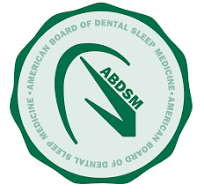How To Fit The MyTAP Device
OSA has been diagnosed already. A dental exam and an airway assessment has been accomplished. The application for this device is for a screening to determine if the patient can tolerate mandibular advancement. It can also be used for an emergency MAS, or to be used while the patient is waiting for repair on their MAS.
Show patient the device, explain how it can be fitted and refitted to add/reduce retention by them at home with simmering water. Sometimes, especially in winter, the upper will continue to shrink and be a little too tight by the 2nd or 3rd night.
Supplies needed: Hotpot with water just below boiling, MyTAP, headpiece and trimming burs, scissors, timer.
Upper segment
Look at arch. Get idea of where it may be wide, narrow, or short. If you have diagnostic casts, all the better since an initial fit can be made to those casts.
With those patients with a narrow upper arch (which is bilaterally constricted in the premolar area), in order to engage the premolars with the thermocryle, the acrylic rim may protrude buccally more than you want in the cuspid areas,
creating a ledge that may bother the upper lip. You may need to trim this acrylic with an E‐ cutter and polish it after fitting. Same for lower narrow arches. Heat in the hot water until clear.
Approach the patient from above and behind after telling them, “I’m going to adapt this to your upper teeth and begin to squeeze it against your teeth. When I’ve done that, I want you to close your mouth just enough so your lower teeth lightly stabilize the upper rim while we’re adapting it.” If they bite too hard the whole thing will flare out. Insert from above looking at the maxillary midline and centering the handle. Then go in front of the patient to expand/squeeze the posterior sections to line up over the teeth. Then use your fingers to initially adapt the buccal and lingual flanges. Have the patient close gently to stabilize. Use your fingers while they bite lightly to adapt the thermocryle to the facial/buccal of all teeth. Tell them to pooch out their lips (so it doesn’t catch the soft thermocryle on the way out) and then suck on the device for 3 minutes ‐‐ use timer). Rubbing the cheeks into the upper teeth will help in approximating the thermocryle to the buccal of the upper teeth.
If they have a low tongue posture (which most do) tell them you want them to use the back of their tongues to iron down the posterior flanges while they suck. Tell them when the timer goes off to just breathe through their mouths. After that time period, check to make sure the thermocryle is no longer translucent. Remove, check for appearance of conformation to teeth. If there’s a misfit in any area, soften that area in hot water and repeat. Put into ice water for 30 seconds and then check fit. Check retention.
Lower Segment
Place the upper on the upper arch. Heat the lower until white thermocryle is clear. Approach from the front. Place the anterior portion so that the grey rod lines up with the maxillary midline. Then spread/squeeze the posterior segments so that the acrylic rims are over the posterior teeth. Begin to adapt the posterior flanges by squeezing with your fingers, and run your index finger back occlusally on each side to iron down the distal portion of the thermocryle to engage as much as possible the distal of the lower molars. (If you don’t there may be a little occlusal bump of thermocryle over the occlusal surface of the last molar that interferes later with protrusion of the device.)
Have them close lightly and use your fingers over the lower anterior thermocryle to begin its adaptation to these teeth. Then have them pooch lips and suck for three minutes like they did on the upper. Point out to them that unlike the upper, there is thermocryle on the lingual of all of their lower teeth and that while they’re sucking they need to use their tongue to iron down all of this material towards the gum line of all their lower teeth. During the initial timed sucking phase, while their lips are closed use massaging pressure all around the facial of their lips to help adapt the material.
At the end of the three minutes, check, chill and check fit. We show the patient the assembled MyTAP. Show them the anterior inclination
of their upper anterior teeth and explain the upper is inserted first onto the anterior teeth at an angle which permits this and then rotated up and back onto the posterior teeth. You insert the upper for them the first time, then have them bite into the lower. Then show them how to remove it. Have them try it themselves. Any obstacles at that point can be trimmed with the acrylic bur.
To remove, use this sequence:
1) Bite down with MyTAP in place.
2) Get thumbnails under the buccal flanges of the lower and hold the lower unit upwards while opening out of the lower.
3) Get fingernails under the posterior flanges of the upper and jiggle downward and forward to remove. Have them (using a mirror) take the appliance in and out and assure them that shortly this will become muscle memory.
They are instructed to clean the MyTAP every morning with soap and cold water and to keep it away from pets! Let it dry in the open.
Initial use
Tell them they may want to take some Advil/Motrin/Aleve before bed the first several nights due to some predictable jaw soreness and to expect
sensitivity to biting hard foods like toast in the morning for month or so. Instruct them to use the Morning Aligner starting 5 minutes after removal of MyTAP until the posterior teeth meet. Patients find this most effective while doing this in the shower.
Consider starting them about 30% of maximum protrusion and moving forward from there. Instruct them that achieving airway patency and homeostasis is a process which will take time. They may want to just wear it with no protrusion for a few nights until their salivary glands realize it’s not food and the TM joints get used to it!
-2700x842-1920w.png)









